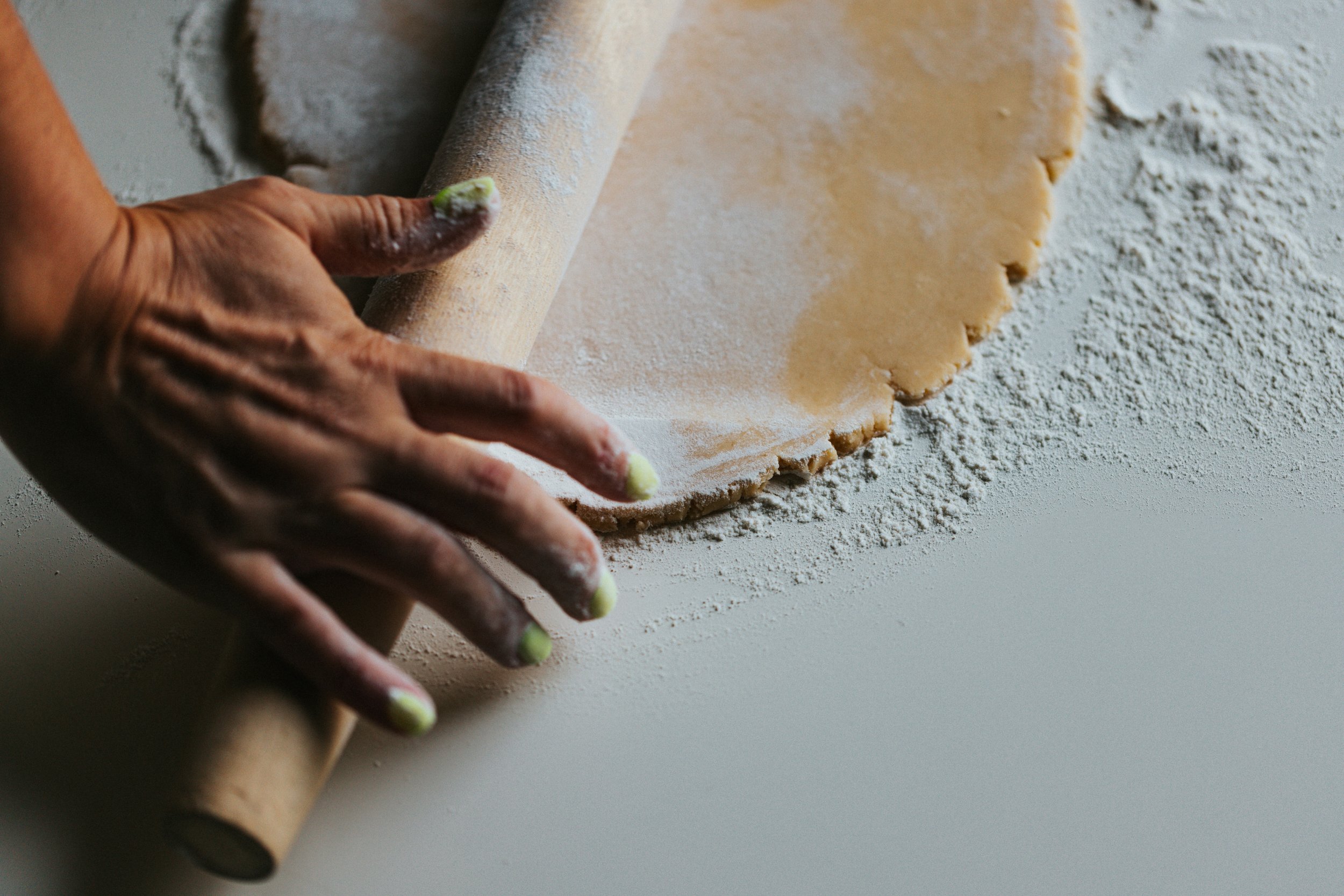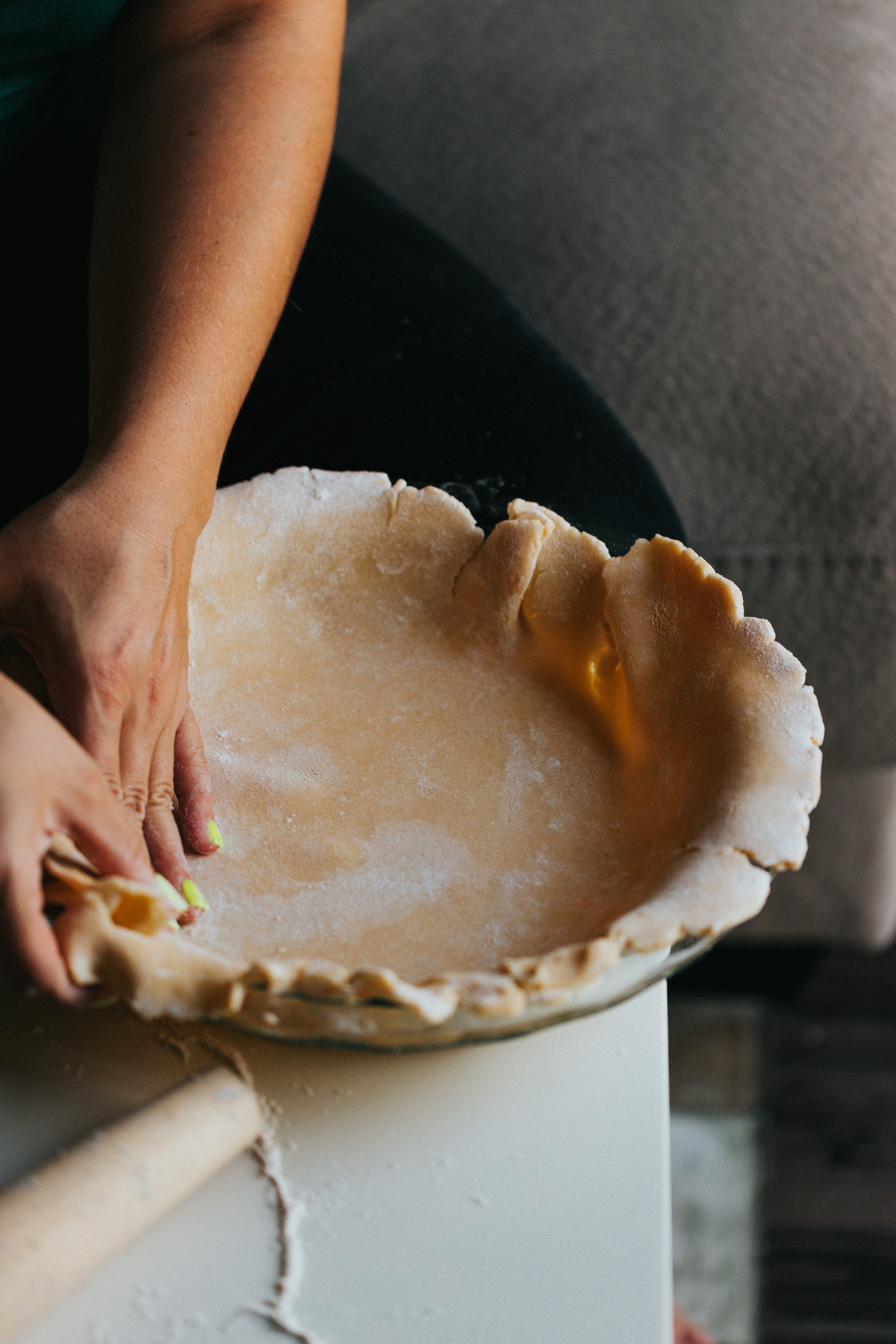Healing Turmeric & Thyme Chicken Pot Pie
There’s something deeply therapeutic about making a homemade chicken pot pie. From the rhythmic chopping of vegetables to the golden crust baking in the oven, this dish invites you to slow down and embrace the present moment. Cooking can be a form of meditation—a chance to focus on the senses, breathe deeply, and feel connected to something nourishing.
This Healing Chicken Pot Pie is designed to support both body and mind. The warmth of turmeric and ginger provides anti-inflammatory benefits, soothing the body from the inside out. Thyme and sage offer grounding, familiar flavors that evoke a sense of home and emotional stability. Every bite feels like a warm embrace, reminding you to pause, reset, and care for yourself.
I remember making a version of this pot pie during a particularly stressful season of life. As I stirred the creamy filling, the aroma of sage and thyme filled my kitchen, and for the first time in days, I felt at ease. Cooking this dish became my anchor, a moment to slow down and breathe through the chaos. That’s the magic of mindful cooking—it turns an everyday meal into an act of healing and self-care.
So whether you need a mental reset, a cozy moment of self-care, or simply a nourishing meal, let this pot pie be your reminder to slow down, breathe, and embrace the warmth of the present moment.
Ingredients:
For the Filling:
2 tbsp butter or olive oil
1 small onion, diced
2 carrots, diced
2 celery stalks, diced
2 cloves garlic, minced
1 tbsp fresh ginger, grated
1 tsp turmeric
1 1/2 cups cooked chicken, shredded
1 cup peas
1 1/2 cups chicken broth
1 cup whole milk or cream
2 tbsp flour (or cornstarch for gluten-free)
1 tsp fresh thyme
1 tsp fresh sage, chopped
Salt and pepper to taste
For the Crust:
1 1/4 cups all-purpose flour
1/2 tsp salt
1 tsp baking powder
1/2 tsp turmeric
1/2 cup unsalted butter, cold and cubed
1/3 cup buttermilk (or milk + 1 tsp vinegar)
1 tbsp fresh thyme, chopped




Instructions:
Mental Check-In: Before you begin, spend a minute checking in with yourself. How are you feeling emotionally? Acknowledge any stress or tension. Set an intention for your cooking session, such as “I invite calmness into this space.”
Preheat Oven to 375°F (190°C):
As you turn on the oven, take a moment to stand tall and take a few deep, grounding breaths. Feel your feet connected to the floor, anchoring you in the present.
Sauté Aromatics:
In a large pan, melt butter over medium heat. As you chop onions, carrots, and celery, focus on the rhythm of your knife. With each chop, imagine releasing any tension. Cook them until softened (about 5 minutes). Stir in garlic, ginger, turmeric, thyme, and sage, allowing their fragrances to envelop you. Take a moment to breathe in deeply, appreciating the aromatic notes of each ingredient. Cook for 1 more minute until fragrant.
Mindful Chopping: As you chop the vegetables, practice mindfulness by fully engaging your senses. Notice the colors, textures, and sounds. With each cut, visualize releasing any anxious thoughts. Consider each vegetable as a different emotion—how does it feel to prepare them?
Herb Connection: If you used fresh herbs like thyme or sage, take a moment to connect with nature. Consider the origins of the ingredients—the sun, the soil, the water. Reflect on how spending time in nature or tending to plants can improve mental health.
Make the Filling:
Stir in flour and cook for 1 minute. As you mix, visualize this step as a way to thicken not just the filling, but the moments of your life. Slowly add chicken broth and milk, stirring constantly, and allow yourself to simmer in the warmth of the kitchen. As it thickens, think of it as building a supportive foundation within you. Add chicken and peas, then season with salt and pepper, whispering kind affirmations to yourself as a reminder to nurture your spirit.
Journaling Practice: While the filling simmers, take a moment to jot down your thoughts. Reflect on what “nourishment” means to you. How can you nourish not just your body but your mind? Write down three things that bring you joy or peace.
Prepare the Crust:
In a bowl, whisk together flour, baking powder, salt, and turmeric. As you cut in cold butter, remind yourself that this process is about creating something beautiful. Feel the texture change beneath your fingers. Stir in buttermilk and thyme until just combined, and take a moment to appreciate each tactile element.
Affirmations through Mixing: As you mix the ingredients for the crust, say positive affirmations out loud or in your mind, such as “I am creating something beautiful” or “I deserve this care and attention.” Let each affirmation bolster your sense of self-worth.
Assemble & Bake:
Pour the filling into a baking dish, visualizing it as a source of nourishment for your body and soul. Drop spoonfuls of biscuit dough over the top, allowing your instincts to guide the placement. Bake for 25-30 minutes, and as it cooks, find stillness—perhaps sit or stand in a serene pose, focusing on your breath and the anticipation of warmth.
Visualization Exercise: While assembling, visualize the cozy, loving environment where you’d enjoy this meal. Imagine the laughter of friends or family, the warmth of togetherness. This exercise can help cultivate a sense of belonging.
Let it Rest:
Once baked, allow the pie to sit for 5-10 minutes before serving. Use this time to reflect on your cooking journey. Consider the flavors, textures, and what makes you feel grounded and safe.
Gratitude Moment: Use the resting time to reflect on gratitude. Think of three things you are grateful for today—no matter how small. This practice can shift your focus from stress to joy, enhancing your emotional well-being.
Enjoy Mindfully:
As you serve and share this dish, take a moment to appreciate the colors and aromas. Share this meal with someone you love—it’s a dish best enjoyed in good company. As you eat, chew slowly, allowing the flavors to unfold and nurturing a sense of gratitude for yourself and the nourishment you’ve created. This Healing Chicken Pot Pie is more than just comfort food; it’s a recipe designed to support both body and mind. The warmth of turmeric and ginger provides anti-inflammatory benefits, soothing the body from the inside out. Thyme and sage offer grounding, familiar flavors that evoke a sense of home and emotional stability. Each bite is a warm embrace—inviting you to pause, reset, and care for yourself.
Savoring Practice:
As you eat, take small bites and chew slowly. Notice the flavors and textures. Allow yourself to feel every sensation, which can heighten your awareness and appreciation for the meal. Consider how this meal represents your efforts in self-care.
Sharing with Others, Connection Reflection:
If you share the meal with loved ones, take a moment to express appreciation for their presence in your life. Discuss the importance of community and connection for mental well-being. Share stories or memories connected to comfort food, reinforcing bonds.
Ongoing Reflection, Post-Meal Journaling:
After enjoying the meal, spend a few moments in reflection. How did the cooking process make you feel? Did any particular moment stand out as especially grounding or healing? Write down your thoughts to revisit later, reinforcing the mindfulness practiced throughout the experience.
Breath with Each Step:
While cooking, integrate simple breathing exercises. For instance, inhale deeply through the nose for four counts, hold for four, and exhale slowly for four. Use this technique whenever you feel stressed or rushed during the cooking process. By embedding these mental health practices into the cooking and enjoying of your Healing Chicken Pot Pie, you can create a space that not only nourishes your body but equally cares for your mind. The process transitions from merely cooking a meal to a holistic experience of self-care and mindfulness.



